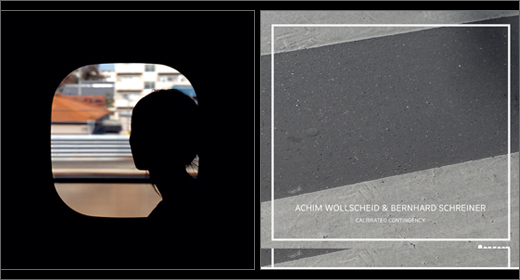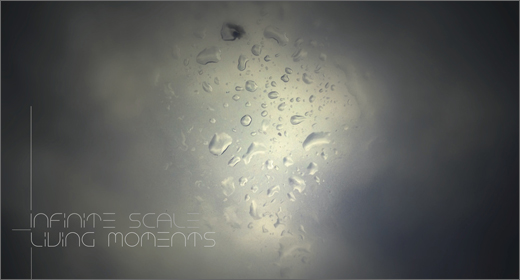One of the many experimental three-track records from Bernhard Living, From Here to There is yet another exploration of tonality and thought.

A transformation
Tying the minimalistic and bareboned sound of the music to a more substantial concept behind it makes the two complementary, in a way, as you not only have plenty of time to think while listening to the music, but with how minimalistic it is, you could also dig really deep into what little it has to offer. Now, I don’t mean little in the sense that it’s shallow or so dull that it may induce a coma—though if you’re not patient nor interested in this kind of music, it actually could—rather I mean it in the true sense of the word, there’s just very little happening at once; there’s not much layering, not much progression aside from the chord changes you can hear—and that Living himself also explains in the album’s Bandcamp page, so you don’t really even have to break those down either—there’s not much difference in the various timbres at play, and on this record specifically there also happens to be no silence whatsoever, as every single note is followed by another, continuously.
I don’t bring that up solely because it’s a quality of the music, as you get this never-ending stream of sound, but also because it’s very much intentional, I suppose. The name of the record, From Here to There, and Living’s description of this name in its Bandcamp page, they both suggest that there’s an idea of movement behind these pieces.
Movement isn’t the exact word I’d use though, because it gives off the idea that something is lively and is actively moving, while also suggesting it’s limited, in a sense, as once the movement is done, there is no more action. On this record, it’s more like a transformation, which I suppose also hints at the fact that there’s an end to it, but I find it to be a more accurate descriptor due to how it expresses the idea of a constant and gradual change. And voila, that’s From Here to There in a nutshell, constant and gradual change.
As a still aspiring biologist, that would lead me to tie the album to the word evolution as well, but truth be told, that’s not the point of this LP, as it is instead cyclical more often than not. I don’t think any of these are proper loops, meaning that they’re exact repetitions, but to determine when a change happens upon the repetition of one of these “loops” would require you to specifically focus on that exclusively, given that it’s extremely easy to get lost in these compositions. For that same reason, I want to state once more that if the idea is, in fact, to represent some constant changes, then whether or not these tracks are cyclical shouldn’t even be a worry to begin with, because you should not be able to realize by principle.
I used to often think about the nature of music, or art in general, a couple years back, when I had started writing because I had interest in doing so, because I wanted to know more, because I wanted to theorize why something was placed at that specific point in a song, or why it sounded so good. And, as most things go, I got a bit desensitized by the excess of music I consumed, mostly because of pop music. When I stumble across releases like From Here to There, I’m more than hooked, to see what new perspectives I can gain, steering away from formulas and appeal. And, when the compositions happen to be as minimalistic as these, I also start to think again about concepts in art, not just whether I like it or not.
For instance, one of the things I used to think about a lot that this record has brought back to my mind is how a particular tone can match its pitch. I was a bit stunned at how great the first piece, “Composition 2023.02 (Untitled),” I found to be, not because I had expectations, but because I almost couldn’t understand why exactly such a barren wasteland of music could be so impactful to me. The answer is, because it fits! The gloomy chord progression of this track is very much fitted for its cold and flat drones, it’s as if the word dynamics should be erased from your mind when listening, because each note sounds like a completely straight line. And, it fits! It’s a combination that works, it’s somehow expressive without ever trying to be.
What’s interesting about this piece is also its randomness; every once in a while, a chord will come in, and while each one seems to start after the exact same interval of time, they do not like up with the notes on top, ever, the two do not begin at the same time. This gives the piece a bit more variety to it, as these added chords follow their own path, breaking the stillness of the notes because, in a sense, they kind of pop out of nowhere.
Breaking the stillness of the notes ::
The second piece follows a similar pattern, but instead of single notes, it’s chords succeeding one another, The changes also seem to be a bit more abrupt, some will kind of peel your eyes back if you were starting to lose track. Truth be told, I do not have any particular regards for this one, aside from the fact that it may oddly work as some kind of ambient piece.
As the album’s description states, the last track is oddly based on one of the most iconic jazz pieces ever written, Coltrane’s most famous “Giant Steps.” Well, oddly is a bit of a stretch, as Living is a saxophonist himself, of which you may have heard something if, like me, you happen to be a fan of The Prodigy—odd connection there, but it exists!
“Composition 2023.09 (Untitled)” shares the same iconic chord progression of “Giant Steps,” but if your ear is as terrible as mine when it comes to pitch, you may not notice unless told, because that’s where the similarities both start and end. The track is as cold as the other two, surely not reminding of the energy of the original chord progression, but it’s also so slow and drawn out that it also changes feel completely, from a sporadic shift in Coltrane’s perspective to yet another ever-changing progression. As good as this chord progression is, it still works in this re-contextualized fashion, being rather memorable.
If you’re not a fan of abstract music, then you may not give this record a visit. But, if you do care about ideas and concepts, and do want something that can stimulate you, then I would loudly shout Living’s name for you to hear it across the room—or across the continent, for which I do not need to shout as the internet can do that for me.
Music that can make me think is often times more engaging than music that can solely make me feel, because I suppose you need a bit of both, and the former is usually in the vast minority; that being said, I can surely rely on Bernhard Living to get some cogs turning in my head, and maybe you should too.
From Here to There is available on Bandcamp.
























![Allmanna Town :: 1911 EP (Self Released) — [concise]](https://igloomag.com/wp/wp-content/uploads/2025/03/allmannatown-1911_feat2-75x75.jpg)



